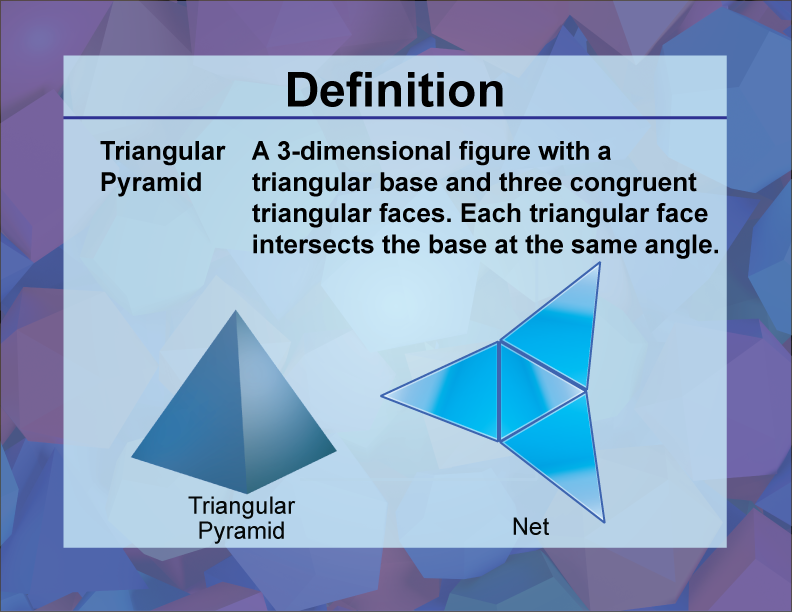
Display Title
Definition | 3D Geometry Concepts | Triangular Pyramid
Display Title
Triangular Pyramid

Topic
3D Geometry
Definition
A triangular pyramid, also known as a tetrahedron, is a three-dimensional geometric figure with four triangular faces, six edges, and four vertices.
Description
In the realm of three-dimensional geometry, the triangular pyramid holds significant relevance due to its unique properties and structural simplicity. Each triangular face of the pyramid converges at a single point known as the apex, forming a solid figure that is both symmetrical and aesthetically pleasing. This geometric shape is the simplest form of a pyramid and is often used in various fields such as architecture, molecular chemistry, and computer graphics.
The triangular pyramid is the only type of pyramid that is also a Platonic solid, meaning all its faces are congruent equilateral triangles, and it exhibits the same angle between each face. This property makes it a fundamental shape in the study of polyhedra and spatial reasoning. Its structural integrity and minimalistic design are leveraged in constructing stable frameworks and in understanding the spatial arrangement of atoms in molecules.
Understanding the properties of a triangular pyramid is crucial for students and professionals dealing with spatial visualization, geometric modeling, and structural analysis. Its applications extend beyond theoretical mathematics into practical implementations, making it an essential concept in the study of three-dimensional geometry.
For a complete collection of terms related to 3D geometry click on this link: 3D Collection.
| Common Core Standards | CCSS.MATH.CONTENT.5.MD.C.3 |
|---|---|
| Grade Range | 4 - 6 |
| Curriculum Nodes |
Geometry • 3D Geometry • Pyramids |
| Copyright Year | 2013 |
| Keywords | three-dimensional geometry, 3d Geometry, defnitions, glossary term |